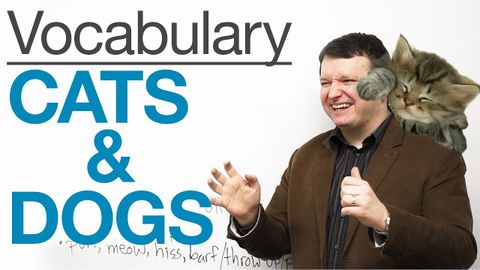
Subtitles & vocabulary
English Vocabulary - CATS & DOGS
00
Halu Hsieh posted on 2013/11/28Save
Video vocabulary
cat
US /kæt/
・
UK /kæt/
- Countable Noun
- Household pet with fur, four legs and long tail.
- A member of the Felidae family, which includes both domestic cats and wild species such as lions, tigers, leopards, and cheetahs.
A1
More dog
US /dɔ:g/
・
UK /dɒg/
- Countable Noun
- Small 4-legged animal that barks kept as a pet
- Intransitive Verb
- (Of something bad) to follow someone closely
A1
More pet
US /pɛt/
・
UK /pet/
- Countable Noun
- Animal kept by a person for company and friendship
- Transitive Verb
- To gently touch an animal or person; stroke
- To kiss and cuddle, sometimes in a sexual way
A2
More animal
US /ˈænəməl/
・
UK /ˈænɪml/
- Noun (Countable/Uncountable)
- A living creature that is not a plant or person
A1
More Use Energy
Unlock All Vocabulary
Unlock pronunciation, explanations, and filters
